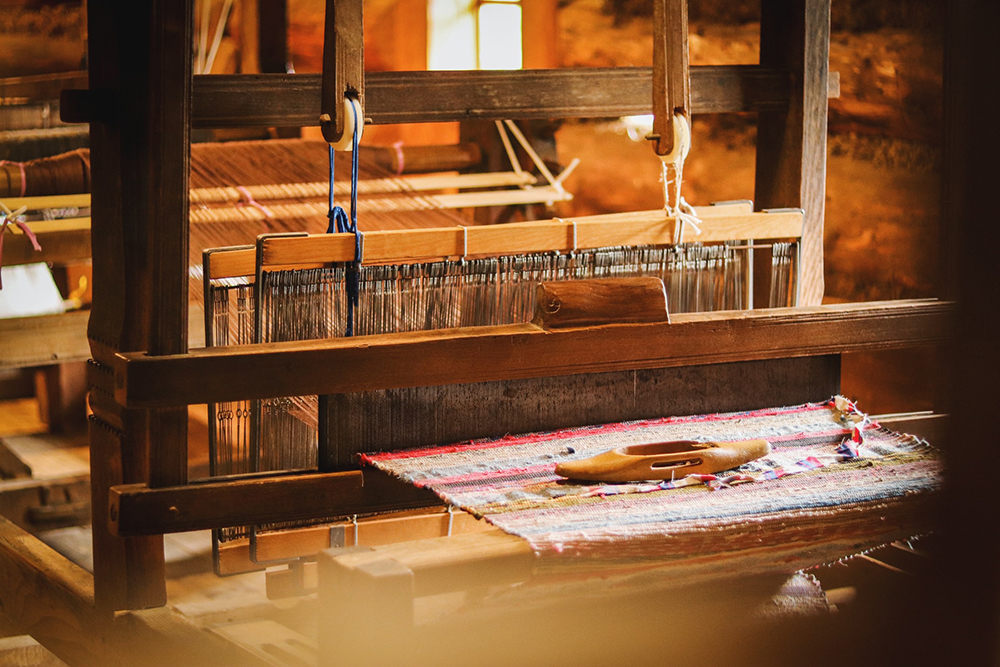
A New Fashion Trend? Garments That Contain The Recently Developed Acoustic Fabric Can “Hear” Sounds
Have you ever used cups or cans as phones to communicate with your friends when you were a child? The telephones of our childhood, the one where you put strings at the bottom of the cups and pull it to make sound travel from one cup to the other, was possible because of vibrations.

In a recently published article written by researchers from the Massachusetts Institute of Technology (MIT) and published in the Nature journal, scientists made a fabric that works similarly to a microphone, wherein the fabric is able to turn sound vibrations into electrical signals.
The “acoustic fabric” that the researchers designed is woven with a fiber that is designed from a “piezoelectric” material. This certain material is able to produce an electrical signal when moved, bent, or mechanically deformed, and it is what provides the means for the “acoustic fabric” to convert sound vibrations into electrical signals.
The tweet below includes a picture of the “acoustic fabric” that the researchers have developed. The acoustic fiber is woven with yarns to make the fabric with the use of a traditional loom. According to MIT News, they said that, in addition to wearable hearing aids, clothes that communicate, and garments that track vital signs, the acoustic fabrics could serve as dust-sensing spacecraft skin, and crack-detecting building covering.
Having trouble hearing? Just turn up your shirt. That’s the idea behind a new “acoustic fabric,” inspired by the human ear, that converts sounds into electrical signals. The fabric can capture sounds ranging from a quiet library to heavy traffic. https://t.co/ymbQ5jzOZA pic.twitter.com/q0jde4Z4Mh
— Massachusetts Institute of Technology (MIT) (@MIT) March 17, 2022
The fascinating fabric is able to capture sounds from decibels of a quiet library up to levels of heavy road traffic. In one of their wearable samples, two panels of acoustic fabric are sewn to the back of a shirt and it is able to detect where a sudden sound, such as handclaps, comes from.
“The fabric was able to detect the angle of the sound to within 1 degree at a distance of 3 meters away,” said Grace Noel, co-author of the article.
The abilities of the acoustic fabric don’t stop there, though. The fabric isn’t just capable of receiving sounds, it can also be made to generate sounds. It won’t be audible to people, but another fabric is able to detect these sounds, which will then be able to be converted to something we can hear.
“Wearing an acoustic garment, you might talk through it to answer phone calls and communicate with others… In addition, this fabric can imperceptibly interface with the human skin, enabling wearers to monitor their heart and respiratory condition in a comfortable, continuous, real-time, and long-term manner,” Wei Yan, lead author of the published article, says.
In addition, the lead author says that the technology is something that can be used with spacecraft skin to listen to (accumulating) space dust, or embedded into buildings to detect cracks or strains, and it can be used to help marine experts monitor fish in the ocean if woven into smart nets.
In their research article’s abstract, the authors wrote the admittedly obvious fact that fabrics have been mostly used to suppress sounds. Inspired by the human auditory system, the researchers came to develop the acoustic fabric that operates like the human ear.
And just like our ears, the researchers developed their fabric to be something soft, durable, and able to detect sound. During the development, the researchers made two discoveries; Stiff fibers were needed to be used to effectively convert sound waves into vibrations, and their team would need to find a way to make the design such that the fibers could be bendable with the fabric, something akin to seaweeds swaying along with the waves, and still be able to produce an electrical output in the process.

The researchers were then able to develop a block of materials they called a ‘preform’, which was made from piezoelectric layers and some other ingredients to enhance the preform’s vibrations in response to sound waves. The fibers that are woven to their acoustic fabric is the result of heating up and stretching the resulting preform, which was about a size of a thick marker, into thin 40-meter long fibers.
During the testing phase of the research, the team tested the fiber’s sensitivity to sound and it resulted in the fiber vibrating and generating an electric current proportional to the sound played through a nearby speaker.
“This shows that the performance of the fiber on the membrane is comparable to a handheld microphone,” Grace Noel says.
The next experiment was with the fiber woven with yarns to produce actual machine-washable fabric. It resulted in something that “feels almost like a lightweight jacket,” said another co-author, Elizabeth Meiklejohn. This is also when they found out that the fabric is able to detect directional sound from the clapping of hands around the shirt.
The acoustic fiber can also be used to monitor health. The team found that, when stitched to an inner lining of a shirt, it can accurately detect the heartbeat of a person. And, with further development, the team says that it may be possible to use the fabric to make some maternity clothes to help monitor a baby’s fetal heartbeat.